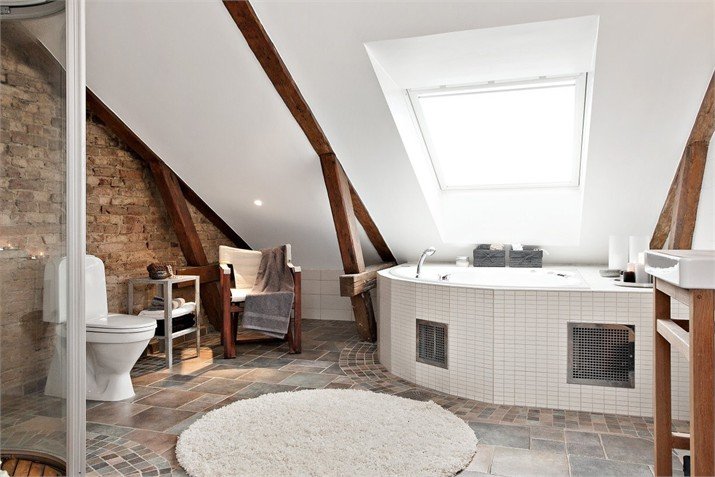#7850. Attic bathroom with historical character: a synthesis of wooden beams, brickwork and modern comfort

This is an exquisite example of attic space adaptation into a bathroom that combines historical authenticity with modern comfort. The architectural composition is built on the contrast between the original roof structural elements—massive wooden beams—and the contemporary white surfaces of walls and ceiling. This dialogue between old and new creates a unique spatial tension characteristic of the best examples of historical building reconstruction.
The brick wall, left in its original state, deserves special attention as it serves not only as a functional element but also as a kind of aesthetic anchor connecting the interior with the building's historical past. The terracotta tile flooring of irregular shape, laid using traditional techniques, emphasizes the rustic character of the space and creates a pleasant tactile contrast with the smooth surfaces of the bathroom fixtures.
The central element of the composition is the built-in bathtub lined with white mosaic tiles, which appears as a contemporary interpretation of traditional baths. Soft natural light penetrating through the skylight fills the space with air and visually increases its volume, creating a sensation of weightlessness and spaciousness despite the sloped roof walls.
When designing a country house facade, such an approach to integrating historical elements with modern functionality can be key to creating a truly unique and distinctive appearance of the building. The use of a round white rug on the floor serves as a soft transition between different zones and materials, while minimalist plumbing fixtures and accessories do not compete with architectural elements but complement them.